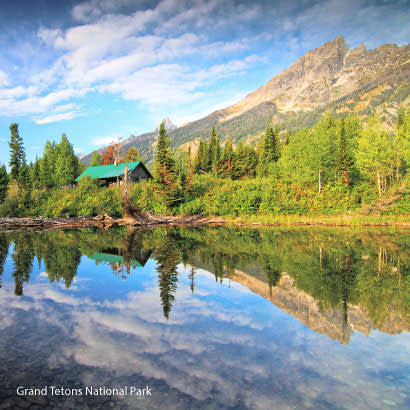
The Department of Interior recently issued notice they will significantly raise daily entrance fees for 17 iconic national parks and has requested public comment. The highest entrance fee would be $70 for the occupants of a single vehicle, $50 for a motorcycle, and $30 for bicyclists and those on foot. Entrance would be allowed for up to 7 days.
The national parks where the new fees would apply are: Acadia, Arches, Bryce Canyon, Canyonlands, Denali, Glacier, Grand Canyon, Grand Teton, Joshua Tree, Mount Rainier, Olympic, Rocky Mountain, Sequoia & Kings Canyon, Shenandoah, Yellowstone, Yosemite and Zion.
The stated purpose for the fee increase is to apply revenues to “to improve facilities, infrastructure, and visitor services, with an emphasis on deferred maintenance projects.”
So, what’s the problem?
These fees are certainly not out of bounds for high-end recreation experiences such as Disney or Sea World or Universal Studios. Their fees are $100 or more for a one day pass. And the stated purposes of applying the extra revenues to improving visitor services and to the well-known maintenance backlog, now exceeding $11 billion for unmet maintenance and repair needs, seem worthy reasons for increasing fees in these much-loved parks.
However, a number of national, regional and local groups — including business coalitions, newspapers and park advocacy groups — have protested that the fee increase is too much, too fast, and will price low and moderate-income families out of the opportunity to visit some of our most beloved and popular national parks.
The fee proposal is met with “shock and outrage by many Americans,” says guest columnist Steve Iobst in the Jackson Hole News and Guide.
“We should not increase fees to such a degree as to make these places — protected for all Americans to experience — unaffordable for some families to visit," says Theresa Pierno, CEO of National Parks Conservation Association.
And Sen. Jon Tester (D-Montana) said, “Glacier and Yellowstone should be accessible to all of us. This decision will price Montana families out of our public lands, and hurt local economies, which thrive thanks to our national parks.”
Part of the reason there is such public ire over the proposed fee increases that would raise about $70 million is that the Administration has recommended a $300 million cut to the National Park Service budget in 2018. Many people place the blame for allowing deferred maintenance of our national parks to get so out of hand at the feet of Congress which has continually underfunded critical needs of our national parks.
Who will be most impacted by the fee increases? That is perhaps the important question. Will it disproportionately affect minorities and those of lesser means? Will it inhibit those who live in surrounding communities from enjoying a one-day or weekend visit to national parks? Will the high entrance fee be a tipping point for a family who wanted to visit a national park to decide to do something else? That remains to be seen, and it is a question that should be asked after the fee charges are implemented.
It is a fact that visitation at the most popular national parks is high and is expected to continue to rise. David Bernhardt, Deputy Secretary of the Interior, said during a recent NPR broadcast that a number of park service superintendents don’t believe visitation will decrease after fees are raised. Pricing usually indicates value, said Kevin Roth, VP of Research for NRPA, and people are willing to pay if they perceive receiving more value than the price charged.
To its credit, NPS implements several practices to encourage free or reduced-cost visitation during the year to all national parks. These dates include: Martin Luther King Jr. Day (Jan); Presidents' Day (Feb); weekends of National Park Week (Apr); National Park Service Birthday (Aug); National Public Lands Day (Sept), and Veterans Day Weekend (Nov). In addition, fees may be waived by superintendents for individual park visits for academic purposes so school groups may visit national parks for free. Visitors may also obtain an annual America the Beautiful pass for a one-time fee of $80 which allows visitors to visit all national parks and other federal public lands throughout the year, an excellent value if you are visiting more than one national park.
A public comment period is open, but it is insultingly short for the significance of this issue, just 30 days.
There are other alternatives to raising fees in the manner proposed and they should be explored. Many other countries charge international visitors a higher entrance fee to their national parks. A high percentage of visitors to our national parks are from other countries. This could provide a new source of much needed revenue.
Congress can do more and do better to address the great needs of our national parks, especially by providing funding to meaningfully address the $11 billion, and growing, maintenance backlog. Increased fee charges should not be the primary solution to address needs that should be attended to by our elected representatives for the benefit of all Americans.
National parks are a birthright of all Americans. These special places should be open and available to all to share in the bounty of our nation’s history and natural beauty and not only those who can afford to pay.
Richard J. Dolesh is NRPA's Vice President of Strategic Initiatives.

